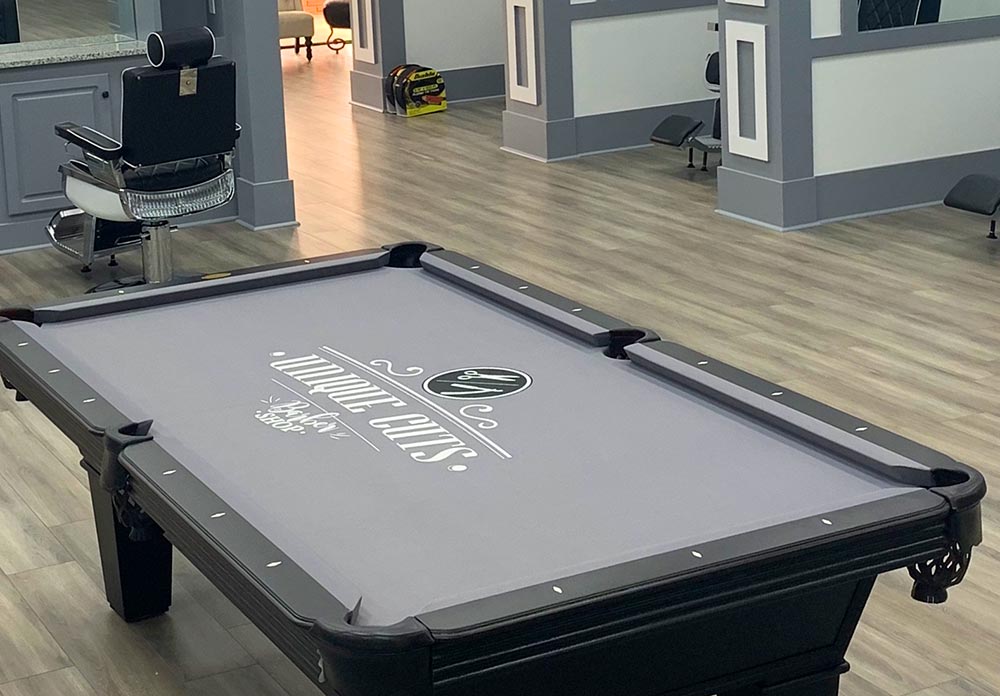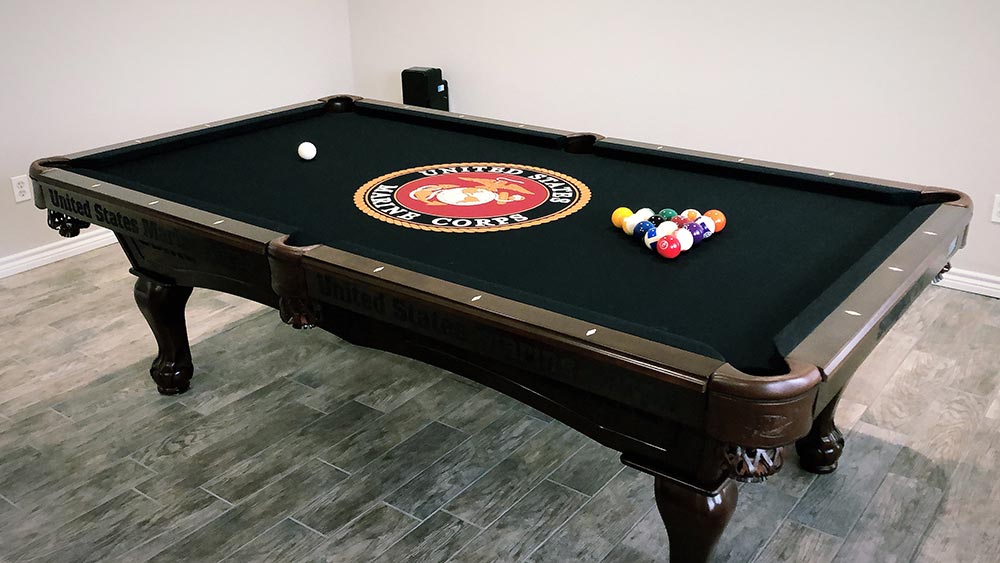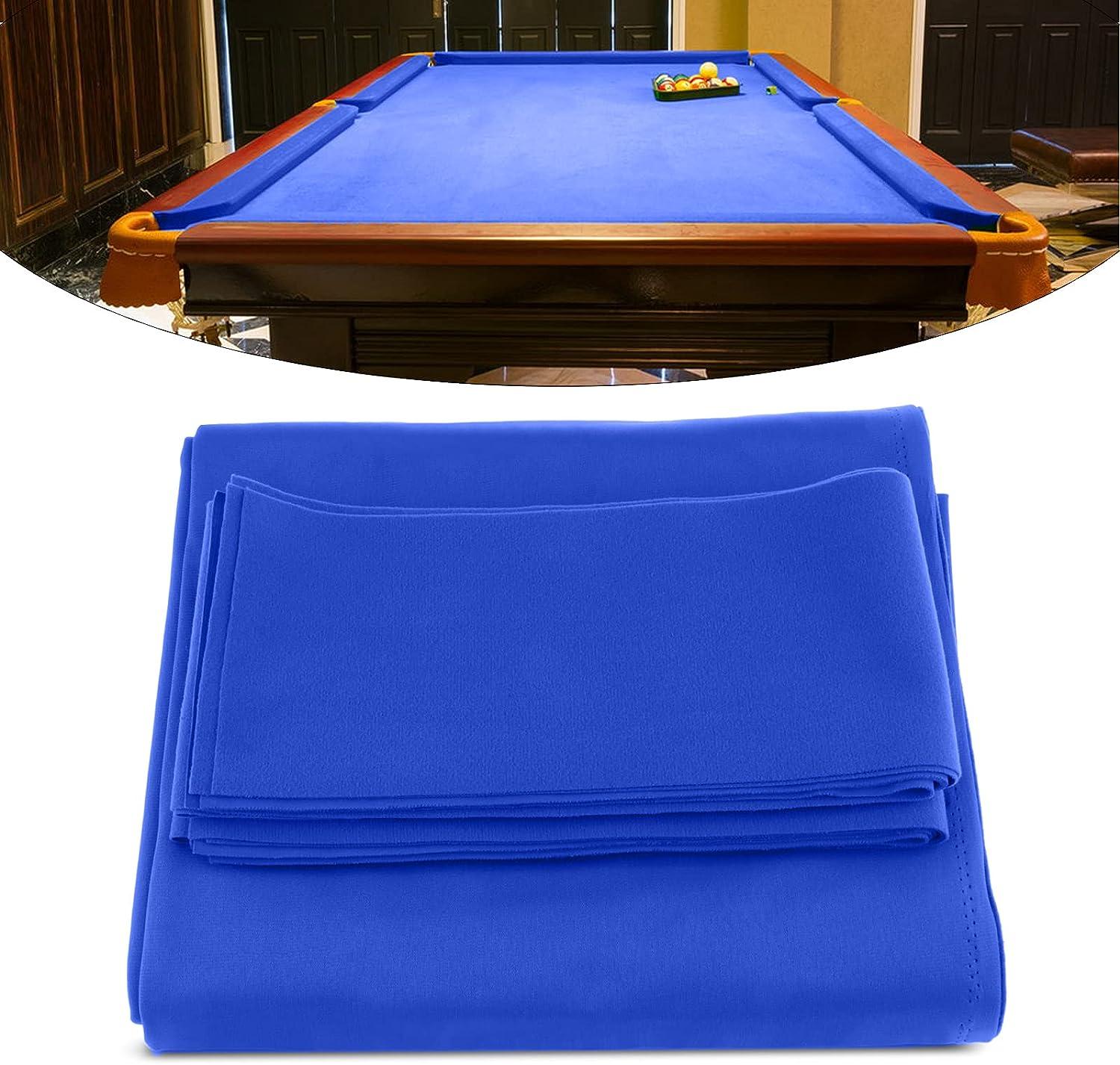Pool Table Felt Guide: Find The Best Options [2024]
Does the choice of pool table felt truly impact your game? The answer, in a nutshell, is a resounding yes the material you choose can dramatically alter the speed, spin, and overall feel of your game, making it a critical decision for any serious player.
The world of pool table felt is surprisingly diverse, a landscape of materials, blends, and performance characteristics that can significantly affect your playing experience. From the silky smoothness that allows for lightning-fast ball speeds to the more textured surfaces that grip the cue ball, the choices are numerous and can seem overwhelming at first glance. But understanding the nuances of these different felts can empower you to make informed decisions, transforming your game and enhancing your overall enjoyment of the sport.
The selection process isn't just about aesthetics, although color plays a role in the overall atmosphere. The technical aspects are paramount, with factors like cloth speed, ball control, and durability taking center stage. Are you seeking a tournament-grade surface capable of withstanding the rigors of professional play, or a more affordable option for casual games at home? The answers to these questions will guide your choices, helping you navigate the complex world of pool table felt.
Let's delve into the specifics, exploring the materials, brands, and characteristics that define the best pool table felts on the market. We'll uncover the secrets of superior play, equipping you with the knowledge you need to make the best possible choice for your pool table and, ultimately, your game.
| Feature | Details |
|---|---|
| Material Composition | Worsted Wool, Wool Blend (Wool/Nylon) |
| Key Brands | Simonis, Predator Arcadia, Championship, ProForm, Homaisson, Mixweer |
| Playing Characteristics | Speed, Spin, Ball Control, Durability, Nap (or lack thereof) |
| Common Sizes | 7 ft, 8 ft, 8 ft (oversized), 9 ft |
| Color Options | Black, Burgundy, Camel, Powder Blue, Royal Blue, Tournament Blue, etc. |
| Primary Use Cases | Professional Tournaments, Bars/Clubs, Home Use |
| Maintenance Considerations | Cleaning, Protection from Spills, Pet Hair Management, Chalk Removal |
| Price Range | Varies widely based on material, brand, and size. |
| Reference Website | PoolDawg - Best Pool Table Felt Guide |
The very foundation of a superior pool table experience is the cloth itself. Its the surface upon which every shot is taken, the canvas for every spin, and the battleground for every match. The choice of cloth can make or break a game, influencing everything from ball speed and accuracy to the overall aesthetics of your table. Selecting the right felt is, therefore, an essential step in creating an optimal playing environment.
One of the most critical aspects to consider when selecting pool table felt is its composition. The blend of materials used determines several of the cloth's most important performance characteristics. The most common materials are wool and nylon, often combined in various ratios to achieve specific desired properties. Wool provides a traditional feel, offering a balance of speed and ball control, while nylon enhances durability and helps the cloth resist wear and tear. Worsted wool, a type of wool fabric, is known for its smooth, napless surface, which contributes to faster ball speeds and truer rolls. Many high-end pool table cloths are made from worsted wool, which is why they are favored in professional settings. The blend of wool and nylon is a critical factor in the cloth's performance. For instance, a cloth that is 70% wool and 30% nylon will generally offer a different playing experience compared to one that is 90% wool and 10% nylon. The higher the wool content, the more the cloth will resemble a traditional playing surface. When selecting a cloth, always examine the material composition to ensure it aligns with your playing style and preferences.
The speed of the cloth is a primary concern for many players. The speed of the cloth refers to how quickly the ball moves across the surface. Faster cloths, typically made from worsted wool or blends, allow for quick ball travel and are favored by players who prioritize offensive play and precise shot-making. A faster cloth often requires less power to execute a shot, allowing for greater control and strategic finesse. The speed of the cloth is directly affected by its surface. The smoother the surface, the faster the ball will travel. Cloths designed for tournament play are often engineered for maximum speed and consistency. In contrast, slower cloths, often found in more casual settings, provide greater ball control but may require more power to execute certain shots. Players should choose cloth speed based on their skill level, playing style, and the type of game they enjoy.
The durability of the felt is another essential factor to consider. Pool tables, especially those used frequently, undergo significant wear and tear. The cloth must withstand the constant friction of balls, cue chalk, and accidental spills. The composition of the felt significantly affects its durability. Nylon, known for its resilience, often enhances a cloth's lifespan, helping it resist tears and fading. A cloth designed for heavy-duty use in commercial settings will likely be blended with a higher percentage of nylon to withstand the constant action. Its essential to understand that a more durable cloth will last longer but may not always offer the same playing characteristics as a premium cloth. However, a durable cloth can prove more cost-effective in the long run, as it requires less frequent replacement. When making your choice, consider the environment in which the table will be used, the frequency of play, and the potential for spills or other mishaps. Proper maintenance is also crucial, but the starting point is the quality of the cloth.
Color is a significant aesthetic choice, and the right color can greatly enhance the visual appeal of a pool table and the overall atmosphere of the playing space. Beyond aesthetics, color can influence the player's perception of the game. Darker colors, such as black, burgundy, or royal blue, often provide a classic look, whereas lighter colors, such as powder blue or camel, may offer a more contemporary aesthetic. The choice of color also depends on the surrounding environment. In a room with bright lighting, darker colors may help reduce glare. In a dimly lit room, lighter colors can help illuminate the table. The color can be a reflection of a player's personal preferences, creating a playing surface that is both enjoyable and visually appealing. Some players find that certain colors affect their concentration or focus. Its essential to consider the overall atmosphere you are trying to create and select a color that complements your style and playing environment.
Several brands have established themselves as leaders in the pool table felt industry, each offering distinct product lines tailored to different needs and preferences. Simonis is a name synonymous with high-quality pool table cloth. Known for its superior worsted wool fabrics, Simonis cloths are the preferred choice for professional tournaments worldwide. The brand offers several different grades, including the 860, and the 760, each designed to provide exceptional playability, speed, and durability. Predator Arcadia, another renowned brand, produces high-performance worsted cloth favored by many players. Arcadia cloths are engineered to provide excellent ball control and speed. They are designed for serious players who demand a top-tier playing surface. ProForm is a brand known for its durable and versatile cloth options. ProForm cloths are designed for a superior playing experience across an array of colors, with durability being one of its key advantages. Champion also offers various cloth options, with a focus on providing value for money. These brands highlight the importance of researching and comparing options before making a purchase, to ensure the best fit for your pool table and playing style.
The specific dimensions of your pool table will be critical when selecting the right felt. Before purchasing, measure your table carefully to ensure the felt will fit correctly. Pool tables come in various sizes, typically ranging from 7-foot to 9-foot tables. The cloth must be large enough to cover the playing surface and the rails, with enough extra material for proper installation. A cloth designed for an 8-foot table will likely be different in size from one designed for a 9-foot table. It's always best to double-check the dimensions. Some manufacturers offer pre-cut cloths designed specifically for certain table sizes. Taking accurate measurements ensures youll have the right size of felt. Remember, the goal is to create a smooth, even playing surface that is free of wrinkles or imperfections, ensuring a true and accurate roll for the balls.
Beyond the playing surface, it's important to consider the environment in which the pool table is located. The lighting, humidity, and ambient temperature can all influence the performance and longevity of the felt. In a room with bright lights, you might want to choose a darker color to reduce glare, and the opposite in dimly lit spaces. High humidity levels can affect the cloth, potentially causing it to warp or become less responsive. Maintaining a consistent temperature and humidity level can prolong the life of the felt. Additionally, consider the potential for spills, pet hair, or other environmental factors. If the pool table is in a room where spills are common, you might opt for a more durable, spill-resistant cloth. Likewise, if you have pets, consider a cloth that is easier to clean and less prone to attracting pet hair.
The quality of your pool table felt is paramount, but its not the only factor determining the quality of your playing experience. Regular maintenance can prolong the life of your felt and maintain optimal playing conditions. Proper cleaning is essential. Regularly use a brush designed for pool tables to remove dust, chalk, and debris that can accumulate on the surface. Avoid using harsh chemicals or abrasive cleaners, as these can damage the fibers of the felt. Promptly clean up any spills to prevent stains. If you use chalk, be sure to apply it carefully and wipe away any excess chalk that falls on the table. Consider using a table cover when the table is not in use to protect it from dust, spills, and other potential damage. Regular maintenance is a small investment that yields significant returns, helping you keep your pool table in top condition.
Ultimately, the best pool table felt depends on a variety of factors including the playing style, the budget, and the environment in which the table is located. For those seeking a high-performance, tournament-grade surface, brands like Simonis and Predator Arcadia represent the pinnacle of quality and playability. If budget is a primary concern, ProForm and other blended options may provide a suitable balance of performance and value. Consider the features that are most important to you, whether it's speed, durability, or aesthetics. Read reviews, research different brands, and if possible, test out different types of cloth before making a final decision. The goal is to create a pool table experience that is both enjoyable and tailored to your specific needs and preferences. Careful consideration of all these factors will ensure a superior pool table experience for years to come.



Detail Author:
- Name : Aliyah Flatley MD
- Email : elena93@rutherford.biz
- Birthdate : 1983-05-23
- Address : 388 Dale Trafficway Apt. 662 South Amaratown, SD 13418
- Phone : +19093976714
- Company : Maggio and Sons
- Job : Air Crew Member
- Bio : A dolor sint doloremque. Laboriosam rerum et aut cupiditate. Rerum quaerat fuga commodi nemo quia et ipsam. Autem aperiam sed doloremque eos.